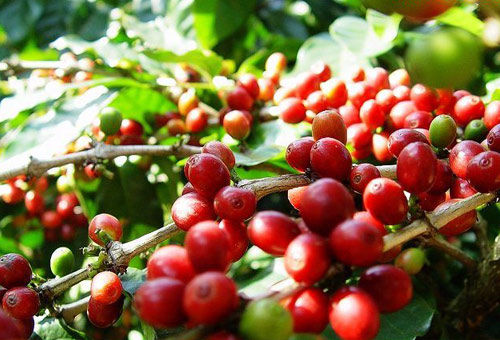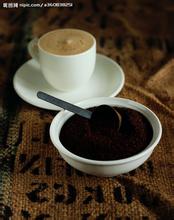Introduction of Rwanda Coffee Flavor producing area Lutexilo, West Province of Malaba Coffee
The biggest harvest season for Rwandan coffee is during the main rainy season, from March to the end of May. During the harvest season, farmers spend most of their day picking coffee fruits by hand. In the afternoon, farmers carry coffee fruits in traditional baskets made of banana leaves to a cleaning station a few hours away. The mechanic picks out the best quality crimson coffee fruit by hand and returns the remaining coffee fruit to the farmers and sells it at a low price in the market outside the Malabaga work area. The mechanic pays the farmer $0.10 per kilogram. The guild deposits the remuneration into the farmer's bank account every two weeks.
The sink technician in the process will clean the coffee immediately because the delay will ferment the sugary outer layer of the coffee beans, ruining the taste of the coffee. The coffee beans are first thrown into a deep trough, and the best quality coffee fruit goes into the bottom and passes through a machine that peels off its skin. The mechanic takes out the floating coffee fruit, processes it in the same way and allows the cooperative to sell it at a lower price in the domestic market. Coffee beans through three cooperative peeling and selection machines, remove the skin and sugary outer layer, and then let the coffee beans individually through the vibrating filter. The filter separates the highest quality A beans from those classified as Class B; the two grades are transported to the hills with a 1% slope of the waterway. In the process of transportation, coffee beans of all qualities are further classified, and there are about 15 sinks at the bottom of the channel that can capture different kinds of coffee beans. Coffee beans are preserved continuously in water. Grade A beans and grade B beans stay for two days and 15-20 hours respectively to slightly ferment and convert the remaining sugar without serious damage to the taste.
After the washed coffee beans are air-dried on the net rack, after washing the coffee beans many times to completely remove the remaining skin and sugary outer layer, the coffee beans are put into the sheltered rack to air-dry. Cooperative staff regularly flip coffee beans, while technicians continue to look for and pick out poor quality coffee beans. The two-week drying process takes place in the sun (prepare the mulch in case of rain) and keep turning the coffee beans. This step reduces the water content of coffee beans from 40% to 12%.
Then the mechanic transported the coffee beans to the technology center near Chez. Some machines installed in warehouses on the hills remove the cutin from coffee beans. The staff sent the coffee beans to nearby research institutes for final quality control-manual sorting, which was carried out by several experienced women. After bagging and labeling according to its quality, the coffee beans can be stored in the warehouse waiting for the market.

Important Notice :
前街咖啡 FrontStreet Coffee has moved to new addredd:
FrontStreet Coffee Address: 315,Donghua East Road,GuangZhou
Tel:020 38364473
- Prev

Amazing peach flavor 90 + the wind of cream milk chocolate in Ethiopia Wellega and Sidama production areas
Producing area 90 + Ethiopia, Wellega (Waliga) and Sidama (Hidamo). In the treatment of 1750 2000m above sea level, the sun flavor is clean, with the flavor of peach, berry, passion fruit, cream and milk chocolate. CoffeeReview score: 96 pts http://www.coffeereview.com/review.cfm?ID=2928 annual bake
- Next

Hawaiian Kona Coffee Flavor introduction to the Manoa Valley area of Oahu
Kona coffee is indeed a treasure in the world and is not easy to find. The real Hawaiian Kona coffee has the sweetness of caramel, which makes people enjoy the unique pleasure and leads you slowly into the detached state of tasting coffee. Of all the coffee producers, Hawaii has the most stringent management of the coffee industry, the highest labor costs and the best level of investment. Coffee from Hawaii
Related
- Detailed explanation of Jadeite planting Land in Panamanian Jadeite Manor introduction to the grading system of Jadeite competitive bidding, Red bid, Green bid and Rose Summer
- Story of Coffee planting in Brenka region of Costa Rica Stonehenge Manor anaerobic heavy honey treatment of flavor mouth
- What's on the barrel of Blue Mountain Coffee beans?
- Can American coffee also pull flowers? How to use hot American style to pull out a good-looking pattern?
- Can you make a cold extract with coffee beans? What is the right proportion for cold-extracted coffee formula?
- Indonesian PWN Gold Mandrine Coffee Origin Features Flavor How to Chong? Mandolin coffee is American.
- A brief introduction to the flavor characteristics of Brazilian yellow bourbon coffee beans
- What is the effect of different water quality on the flavor of cold-extracted coffee? What kind of water is best for brewing coffee?
- Why do you think of Rose Summer whenever you mention Panamanian coffee?
- Introduction to the characteristics of authentic blue mountain coffee bean producing areas? What is the CIB Coffee Authority in Jamaica?

